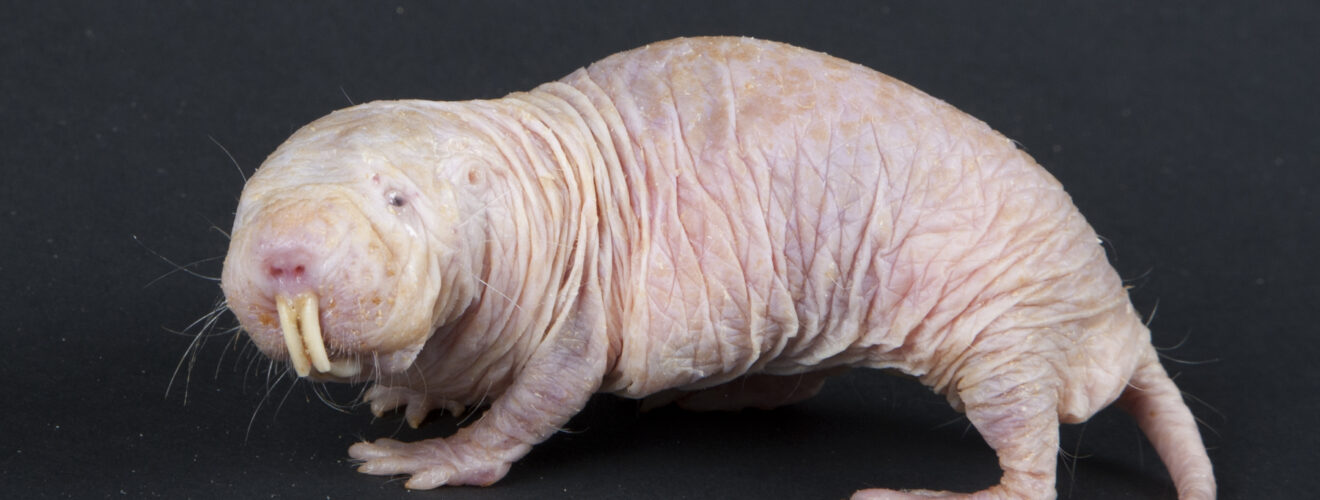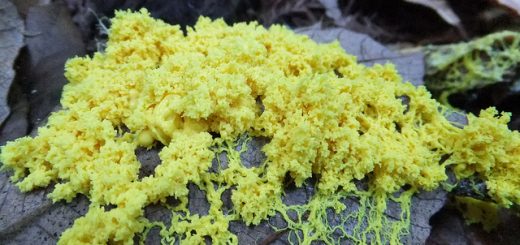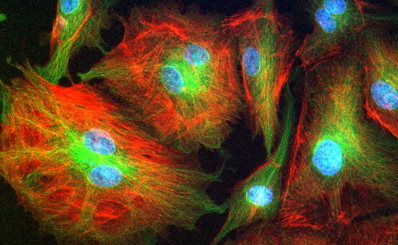The Naked Truth: The Naked Mole Rat’s Ageing Secrets

Introduction
Hairless, wrinkled and nearly blind — the naked mole rat does not exactly coincide with our conventional ideas of what youthfulness and beauty look like, yet this strange little creature appears to completely defy ageing. These hardy rodents can live over 30 years, five times longer than expected based on their body size. 1 As well as their impressive longevity, naked mole rats are also resistant to many age-related diseases including cancer and dementia. 2 So, forget looking to your favourite celebrity for their latest skin care routine or diet that promises to be the secret to healthy ageing and look to the age-defying wonder that is the naked mole rat.
Appearance and Social Structure
The naked mole rat is not familiar to most but if you grew up in the early 2000s it’s likely that the mention of the animal will bring back memories of a popular little character from the well-known Disney channel show Kim Possible; Rufus. Rufus was the infamous crime fighting naked mole rat sidekick of Kim Possible and Ron Stoppable. Considered a fan favourite, this naked mole rat created an enduring fond memory of the creatures for kids of the 2000s. However, fans of Rufus may be a little taken aback by his true appearance that wasn’t quite captured by the cute cartoon…
The body of the naked mole rat is pink, wrinkled and (almost) hairless. They are about 3-4 inches long and have prominent, yellowish chisel-like teeth that allow them to dig their underground tunnels where they spend most of their lives. Over the course of evolution, spending extensive periods in darkness has led to the regression of their eyes. They have become small and poorly developed for sight and they are covered with a layer of skin to protect them from dirt while digging. They instead rely on their well-developed other senses, such as touch and smell to navigate the dark. They have specialised sensory hairs, known as vibrissae, sparsely distributed across their body (hence the almost hairless) which can detect even the slightest vibrations and movement in their surroundings. 3
As if their appearance and choice of habitat wasn’t weird enough, they also display social behaviour that is considered unusual for a mammal. Naked mole rats behave more like a honeybee hive or an ant colony than a group of mammals. They display what is known as eusocial behaviour. They live in colonies dominated by a queen who is served by all the other members of the group. Like the queen bee, she’s the only female allowed to reproduce. The queen ages even more slowly than her male counterparts and continues to reproduce right until the end of her life. 4
Unique Resistance to Ageing
Even considering their bizarre appearance and social structure, the most striking thing about the naked mole rat remains their longevity and resistance to age-related diseases. The oldest naked mole rat known to humans, Joe, turned 39 years old in 2021 and showed remarkably little signs of ageing. 5 Naked mole rats defy what is known as the Gompertz law or the “law of mortality” which states that as an individual gets older, the likelihood of dying increases at an accelerating rate. The law is generally true for all mammals after adulthood, for example in humans the risk of death doubles every 8 years but in naked mole rats their risk of death does not increase as they get older. In fact, even in their older years, cardiac function is maintained, they show signs of neurogenesis (the generation of new neurons in the brain) and show no signs of cancer. 6 So, good news for fans of Rufus, he is likely still alive and fighting crime with the same gusto as in his younger years however for Kim and Ron…the effects of ageing may soon be putting a stop to their crime fighting days.
If we were to revisit Kim and Ron now, they might have started getting a few more grey hairs and wrinkles and running around fighting evil all day may exhaust them a lot more than before. So, what is happening in ageing that is causing this? At its core, ageing involves a gradual decline in the body’s ability to repair and maintain itself. At a molecular level our DNA, our genetic code, accumulates damage with age and our mechanisms for repairing this damage becomes less efficient. At a cellular level, cells become less able to divide and function properly, known as cellular senescence. Ultimately, at the level of organs, this leads to dysfunction and increased susceptibility to diseases like cancer, cardiovascular disease, and dementia. 7 Yet, amidst this universal narrative of ageing, the naked mole rat is an exception and offers an invaluable opportunity to uncover mechanisms to resist ageing.
Unfortunately, naked mole rats haven’t quite divulged all their ageing secrets just yet, but scientists have managed to reveal some pretty exciting stuff. In 2023, one particularly groundbreaking finding came from the University of Rochester. Scientists successfully introduced a gene from the naked mole rat into mice which significantly improved their lifespan and health span. 8 The gene is responsible for making high molecular weight hyaluronic acid (HMW-HA). The naked mole rat produces HMW-HA of a far greater mass (6.1 MDa) than humans (1 MDa) which is thought to be a key driver of its protective effects. A prior study showed that HMW-HA protected naked mole rat cells, as well as mouse and human cells, from damage and death. 9 The protective effect was linked to its interaction with the receptor, CD44, which is associated with the p53 pathway, a molecular pathway important in tumour suppression. Demonstrating that the benefits of HMW-HA can be transferred between mammals suggests that, in the future, this benefit could also be transferred to humans.
The accumulation of DNA damage is a significant hallmark of ageing and it appears that naked mole rats are able to reduce this damage by having very active and efficient mechanisms for DNA repair. 10 Again, this may be linked to the tumour suppressor protein p53, which has a 10 times longer half life (the time it takes for the concentration of a substance to decrease by half) in naked mole rats compared to humans and mice. 11
Another important hallmark of ageing already discussed is cellular senescence. Surprisingly, researchers found that naked mole rats do actually undergo cellular senescence, however, they exhibit heightened resistance to its negative effects by suppressing the metabolic activity of senescent cells. 12 This adaptation is thought to allow them to harness the benefits of senescence — preventing damaged cells from dividing uncontrollably and potentially leading to cancer.
Scientists have also found that their underground, low-oxygen environment has allowed them to evolve distinct cardiometabolic adaptations that may contribute to their good health. Their hearts show remarkable resistance to ischemia-reperfusion injury, which is damage caused by the sudden return of blood flow after a period of oxygen deprivation. They also have a unique metabolic profile with elevated glycogen for energy during low oxygen conditions and reduced levels of succinate, which limits damage to DNA and proteins from reactive oxygen species (reactive molecules that contain oxygen). 13 Figuring out how to use these insights to tackle ageing in humans will be the work of future scientists.
Summary
If you weren’t already a fan of the naked mole rat from watching the loveable Rufus on television then I hope you have now been convinced that what naked mole rats lack in looks they more than make up for in their fascinating biology. Understanding the ways that these weird and wonderful creatures resist ageing remains an exciting area of research, with no doubt many extraordinary secrets still to be revealed. While the naked mole rat may not conform to the conventional standards of beauty, its unconventional biology could be the key to combating age-related diseases and extending human lifespan.
Edited by Cameron McKeddie
Copy-edited by Rachel Shannon
References
- https://academic.oup.com/ilarjournal/article/52/1/41/648968
- https://www.sciencedaily.com/releases/2021/06/210610135749.htm
- https://www.britannica.com/animal/naked-mole-rat
- https://www.nationalgeographic.com/animals/mammals/facts/naked-mole-rat
- https://www.wired.com/story/long-strange-life-worlds-oldest-naked-mole-rat/
- https://elifesciences.org/articles/31157
- https://www.britannica.com/science/aging-life-process
- https://www.nature.com/articles/s41586-023-06463-0
- https://www.nature.com/articles/s41467-020-16050-w
- https://www.ncbi.nlm.nih.gov/pmc/articles/PMC6046242/
- https://www.nature.com/articles/s41598-020-64009-0
- https://www.pnas.org/doi/10.1073/pnas.1721160115
- https://www.nature.com/articles/s41467-024-46470-x






